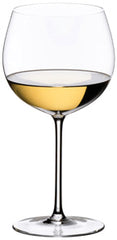Description
All the vines are planted on some of the Sancerre regions' most renowned "grands terroirs". Monts Damnés,Cous de Brault and Chêne Marchand... About 30 parcels, the inheritance from a long line of winemakers, benefit from an ideal south-southeastern exposure. The " Domaine de Saint-Pierre " cuvée is the result of these magnificent terroirs.
Awards
Details

Perfume

Color

Taste
Serve at:
12 - 14 °C.
Longevity:
05 - 10 years

Pairings
- Hectares: 12
The history of the Prieur family domaine has unfolded in prestigious Sancerre terroirs such as Les Monts Damnés, Les Bouffants and le Chêne Marchand over eleven generations.
Domaine Pierre Prieur & Fils is still managed by the family today and covers more than 15 hectares, 12 hectares of which are planted with Sauvignon Blanc and the remainder with Pinot Noir. Read more


| Name | Domaine de Saint Pierre Prieur & Fils Sancerre Blanc 2023 |
|---|---|
| Type | White organic still |
| Denomination | Sancerre AOC |
| Vintage | 2023 |
| Size | 0,75 l |
| Alcohol content | 13.0% by volume |
| Grape varieties | 100% Sauvignon |
| Country | France |
| Region | Loire |
| Vendor | Domaine de Saint Pierre |
| Origin | Verdigny-en-Sancerre (France) |
| Soil composition | The vineyards are composed of three distinctive types of terroir: . 45% of the vineyards are planted on "Terres Blanches", a soft, chalky-clay soil, unique in the Sancerre area producing full-bodied rich wines. . 45% on "Caillottes", a pebbly-chalk soil yielding fine and fruity wines. . 10% on "Silex", a flinty soil producing wines of great verve and openness. |
| Cultivation system | Simple Guyot cut. |
| Harvest | All the vineyards were hand harvested between September 7th and September 21st. Slow fermentation at low temperature (between 16 and 20°C - 61 and 68°F) is conducted in thermo-regulated tanks in order to preserve the maximum natural aromas of the sauvignon blanc. |
| Wine making | Grapes are intact then are brought into the pneumatic presses with a conveyor to save them from oxidation and pummeling. |
| Aging | On the lees and no malolactic fermentation is made. |
| Allergens | Contains sulphites |





